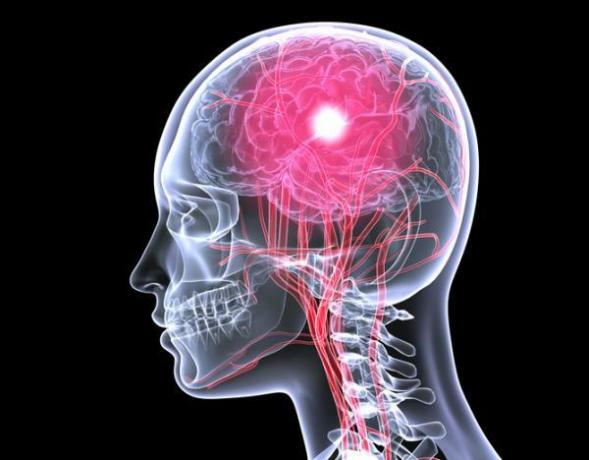
The action of imitating the gestures of others is a fundamental act of personal growth and in the evolution of the species because it offers clear advantages or in terms of time and energy. In addition, through imitation the meaning of the context and the results of the actions carried out by whoever is being observed is learned. In this Psychology-Online article we will talk about the concept of learning by observation and imitation and the main authors. Next we will delve together about what is observational learning theory, and some examples to understand it better.
Index
- What is observational learning in psychology
- Bandura's Observational Learning Theory
- Observational learning processes
- Types of observational learning
- Examples of observational learning
What is observational learning in psychology.
By observation or imitation learning is understood conscious and intentional reproduction of a behavior of the expert by the novice to achieve the same objective that the expert himself pursues. As such, imitation requires the ability to understand the goal (intention) that the expert sets out to achieve, to understand his mental plan by distinguishing between the actions that serve as means and those that constitute the objective, as well as repeating the sequence of actions of the expert to achieve the objective pursued by this. Consequently, observational learning consists of reproducing what the expert wants to do (and not simply what he does). Imitation involves two closely related cognitive processes:
- The capacity of make sense of the actions of others.
- The capacity of reproduce their actions.
Imitation is based, therefore, on the mental attitude of "treating others as yourself"; consequently, all imitative activity implies a greater understanding of the mental functioning of oneself and others on the basis of a system of "self-others analogy". In imitation we learn not only from others, but above all with and through others.
In the human species observational learning is effective and structured around nine months, concomitantly with the appearance of the intentionality and the understanding of others as intentional agents (it is the so-called "turn of the nine months").
Bandura's theory of learning by observation.
Albert bandura is one of the first to emphasize that learning does not exclusively involve the direct response of the individual to stimuli received from the outside, but is also activated through indirect experiences, developed through the observation of other individuals. Indeed, learning is activated even when the behavior of one individual is modified based on the behavior of another individual, which assumes the role of model (modeling). The individual, that is, learns not because he is directly related to the outside, but because observe and then imitate another individual acting as a role model. The experiment of children learning aggressive behaviors in the presence of violent adults is considered the classic example in this regard.
Social learning through the imitation and reproduction of role models present in the context is also called vicarious learning. Here we explain in detail the bandura social learning.
What are the characteristics of observational learning? Studies show that this vicarious learning is favored by some conditions:
- The similarity of the benefits and the similarity of the personal characteristics between the observer and the model.
- The multiplicity and variety of the models.
- The competence of the model.
- The ID between model and model.

Observational learning processes.
Observational learning involves a series of stages, each of which involves different processes:
- Care processThat is, focus, pay attention, put something in the center of your perceptual field.
- Representative processIn other words, once the behavior of the model is registered, the individual interprets it in the light of his knowledge and memorizes the most important aspects, which, where appropriate, he can reproduce.
- Reproduction process, that is, the motor reproduction of the behavior observed and stored in the two previous phases.
- Motivation process, is activated by the advantages that the individual hopes to have by imitating the model and which may consist of external reinforcements, self-reinforcements or vicarious reinforcements.
Types of observational learning.
There are five possible outcomes of observational learning:
- Direct attention. By observing others, we not only learn acts, but we also observe objects related to acts.
- Encourage existing behaviors. This type of observational learning represents that observing the behavior of others tells us which of the behaviors we have already learned we should use.
- Change inhibitions. If class members observe that a student breaks a rule and gets away with it, they would learn that breaking the rules does not always bring undesirable consequences (ripple effect)
- Teach new behaviors and attitudes. When applied thoughtfully, modeling is an effective and efficient means of teaching new behaviors.
- Arouse emotions. Using observational learning, individuals develop emotional reactions to situations that they have never personally experienced, such as flying or driving.

Examples of observational learning.
In a famous experiment, Bandura illustrates the power of social conditioning through an experiment with children. In the experiment There are three groups of preschool-age children:
- In the first group, together with the children, there is an adult who behaves aggressively against an inflatable doll, named Bobo, and hits him screaming.
- In the second group, there is always an adult who plays with wooden constructions, without showing any type of aggressive behavior against Bobo.
- In the third group, there are only children who play freely.
The children are then led to a room where neutral games are available (plush, truck models) and aggressive games (rifles, Bobo, a ball with a painted face tied to a string). It follows that children who had observed the adult hit Bobo show a higher incidence of aggressive behaviors, both with respect to those who had had an adult as a non-aggressive model, and with respect to those who had played alone.
Therefore, examples of observational learning in the classroom are all behaviors that are repeatedly performed by adults while children can observe them. For example, leave the jacket on its hanger, say hello and goodbye, clear the table ...
This article is merely informative, in Psychology-Online we do not have the power to make a diagnosis or recommend a treatment. We invite you to go to a psychologist to treat your particular case.
If you want to read more articles similar to Observational learning theory: what it is and examples, we recommend that you enter our category of Basic psychology.
Bibliography
- Anolli, L. (2006). The multicultural mind. Bari: Editori Laterza.
- Salvemini, S. (2017). Organizzazione aziendale. Milan: Aegean.
- Verga, R., Marinelli, D. (2013). L’arte della mediazione. Milan: Franco Angeli.
- Woolfolk, A. (2006). Educational psychology. Madrid: Pearson Education.


